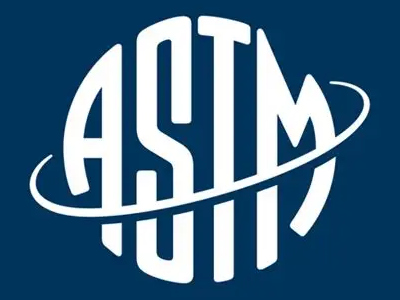ASTM by American Society for Testing Materials
ASTM is drafted and maintained by an independent, non-profit organization, ASTM International
1. Name and First Publication Year
Name: ASTM is now officially named ASTM International (globally recognized). Its historical name evolution is as follows:
1902: The U.S. branch of the International Association for Testing Materials (IATM) became independent and formally established the American Society for Testing Materials.
1961: Renamed to the American Society for Testing and Materials (ASTM) to reflect its expanded scope.
2001: Renamed to ASTM International to emphasize its global influence.
First Publication Year: ASTM was established in 1898. Although search results do not explicitly mention the specific number and publication year of the "first" ASTM standard, its standardization activities began in the late 19th and early 20th centuries, initially focusing on testing methods for materials such as steel.
2. Drafting, Maintenance Authority, and Publication Website
Drafting and Maintenance Authority: ASTM International is an independent, non-profit international standards development organization. Its standards are developed by over 30,000 members (from more than 100 countries) who voluntarily form 140+ technical committees (TCs) and 2,000+ sub-technical committees (SCs). These committees draft, revise, and vote on standards based on the principle of consensus. The ASTM headquarters primarily provides administrative support, meeting coordination, and publication services.
Publication Website:
The most authoritative official platform for accessing the full text of ASTM standards is ASTM Compass®: https://compass.astm.org. This platform includes all current standards, historical standards (Historical), withdrawn standards (Withdrawn), and a vast collection of technical papers and monographs.
The ASTM official website https://www.astm.org also provides extensive standard information, technical committee updates, and news.
3. Main Content
ASTM standards cover an extremely wide range of materials, products, systems, and services. Their main content can be understood from the following two dimensions:
① Standard Types (by Application Purpose)
ASTM standards are primarily divided into the following six types:
Standard Test Method: A unified procedure for identifying, testing, and evaluating the quality, characteristics, and parameters of materials, products, systems, or services.
Standard Specification: Technical requirements and detailed descriptions for materials, products, systems, or projects, along with procedures to meet these requirements.
Standard Practice: Instructions for one or more specific operations or functions that do not produce test results (similar to operational procedures).
Standard Terminology: Descriptions or definitions of terms in specific fields, and explanations of symbols, abbreviations, and acronyms.
Standard Guide: Provides guidance and recommendations for a series of choices or applications but does not recommend specific implementation methods.
Standard Classification: Distinguishes and categorizes materials, products, systems, or specific services based on origin, composition, performance, or use.
② Coverage Areas (by Discipline)
The ASTM standards yearbook is traditionally divided into 15 categories (Sections), including but not limited to:
- Steel Products
- Nonferrous Metals
- Test Methods and Analytical Procedures for Metal Materials
- Construction Materials
- Petroleum Products, Lubricants, and Fossil Fuels
- Paints, Related Coatings, and Aromatic Compounds
- Textiles and Materials
- Plastics
- Rubber
- Electrical Insulators and Electronic Products
- Water and Environmental Technology
- Nuclear Energy, Solar Energy
- Medical Devices and Services
- Instrumentation and General Test Methods
- General Industrial Products, Special Chemical Products, and Consumable Materials
4. Update Frequency
ASTM standards have a flexible update mechanism designed to promptly respond to technological and market changes:
Standard Development and Revision Cycle: The development and revision of ASTM standards have no preset fixed time limits. The cycle length depends on the complexity of the technology and the speed at which the committee reaches a consensus, which could be as short as one year or as long as over a decade.
Standard Review: Although ASTM standards are generally recommended to be reviewed every 5-8 years, there is no mandatory requirement. Technical committees independently decide when to initiate a review process based on technological development needs to confirm whether a standard remains valid, requires revision, or should be withdrawn.
Publication and Platform Updates: Once new standards are approved or existing standards are revised, they are promptly published. The current standards in the ASTM Compass database are automatically updated to the latest version weekly, ensuring users access the most up-to-date content.
Supplementary Information
ASTM standards are widely adopted globally. They are not only extensively referenced by the U.S. government and the Department of Defense but have also become internationally recognized standards in many countries and industries. Their key features include high market relevance, transparent development processes (allowing any interested representative to participate and address all objections), and strong consensus-building.
Standard Name: ASTM International Standards (American Society for Testing and Materials, later renamed ASTM International)
First Publication Year: The association was founded in 1898. Although the specific year of the earliest standards is not clearly documented, standardization activities began in the late 19th and early 20th centuries.
Authority: ASTM International (American Society for Testing and Materials)
Official Publication Website: ASTM Compass Platform (https://compass.astm.org) or ASTM Official Website (https://www.astm.org)
Main Content: Covers 15 major categories, including steel, nonferrous metals, petroleum products, construction materials, environmental technology, medical devices, etc. The standards include diverse types such as test methods, specifications, and guides.
Update Frequency: Current standards are updated weekly; there is no fixed development cycle for standards, but they are typically reviewed every 5-8 years.


